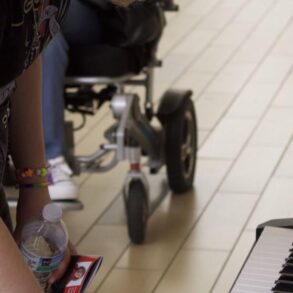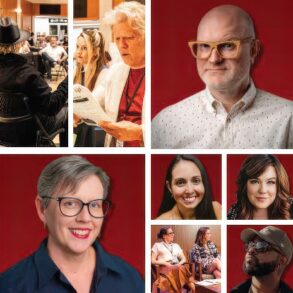Edwin Njongo is not yet a well-known artist, leave alone a brand name, unlike Michael Soi’s whose name and colorful bags are widely known as chic fashion statements from Kenya and Africa or Boniface Maina whose works of sculptural paintings are just as original, innovative, and striking as Soi’s.
Yet Njongo rivals both artists for their wit, originality, and subtle sense of humor that ripples through all three artists’ works.
Njongo’s apparent operating ‘under the radar’ of renown may change soon enough. It could happen once more art-lovers see a whole gallery-full of works by one of the most eye-catching, fun-loving, quirky and original as is Njongo’s’ whose art we first saw six months ago when he had just a few of his paintings in a group exhibition at the Karen Country Club.
Otherwise, we just saw his first solo exhibition titled ‘Between the lines’ at Banana Hill Gallery which unfortunately just closed last weekend. The BDLife found his paintings and drawings just as proficiently executed, amusing, quirky and original as were his works that we first saw at the Karen Club.

Edwin Jongo’s ‘Lady I’ on display at Banana Hill Gallery during his solo exhibition on July 3, 2024.
Photo credit: Maragretta wa Gacheru | Nation Media Group
All three artists, Soi, Maina and Njongo, are figurative painters who love bright colours and irony as they break through conventionality and conformity to present an originality that is unique, all their own.
All clearly feel free to explore their own mind to feel and make way for fresh, new, and even spontaneous ideas to speak to their brushes, and in Maina’s case, also speak to his carpentry skills to start on another series of works that are both sculptural (using wood, hammer and nails) and painterly, (using acrylics, charcoal, and ink) to express whatever issue they find most appealing. That sense of spontaneity is often the spark that triggers their originality and inspiration.
The issues of conventionality and copy-cat conformity that plague many younger local unschooled artists who, most likely haven’t been tutored in the importance of imagination, innovation and originality in their art practice.
The antidote to the copy-cat influence that the acclaimed Tanzanian-Kenyan-painter-sculptor and co-founder of Paa ya Paa Gallery (the first African-owned gallery in Kenya) Elimo Njau used to say in his heyday when he ‘preached’ against conformity and basically plagiarism, was quite clear.
He insisted that ‘Copying puts God to sleep.’ Its influence kills originality, makes artists lazy, and is a quick and easy means of making cash, but it will never make them great.
In Njongo’s case, he may or may not achieved greatness, but it won’t be for want of original ideas and expression. He takes some of the usual topics that many Kenyan artists like Dennis Muraguri, Michael Chalo, and Samuel Njuguna Njoroge take, namely matatus, piki piki’s, bicycles and transportation generally. But he takes his own original way of framing his gaze, perspective and artistry.
Njongo has such a deep affinity for matatu which began by the time he was nine years old, he told the BDLife shortly after his first solo show at Banana Hill opened. What he also told us about his upbringing in art felt as if he had been born with a paint brush or pencil in hand. He was already doodling by the time he was four.
Then he went to a pre-primary school where they taught him the same basics techniques of painting, but he already felt the classes were cramping his style of art. But then he went on to a primary school where he was also taught more of the same , but now he was getting even more weary of art classes.
What was more exciting for Njongo was jumping on a matatu to travel to and from his home in Eastlands all around the city. He was now finding his way into matatu culture. He’d take in everything he saw, register it in his mind, and use the vehicle as a sort of tour bus which is a new concept. He didn’t have money to buy a car or even a bicycle, but he was struggling to prove the poor can also rise to become interesting artistes.
After spending the whole day on the bus, he we’d go home and first sketch, then paint everything he’d seen during the day. This is a practice he still pursues, that is, painting what he sees on the ground among everyday people. It’s taken him to group exhibitions around Nairobi, but now he’s had his first solo show.
This post was originally published on this site be sure to check out more of their content




